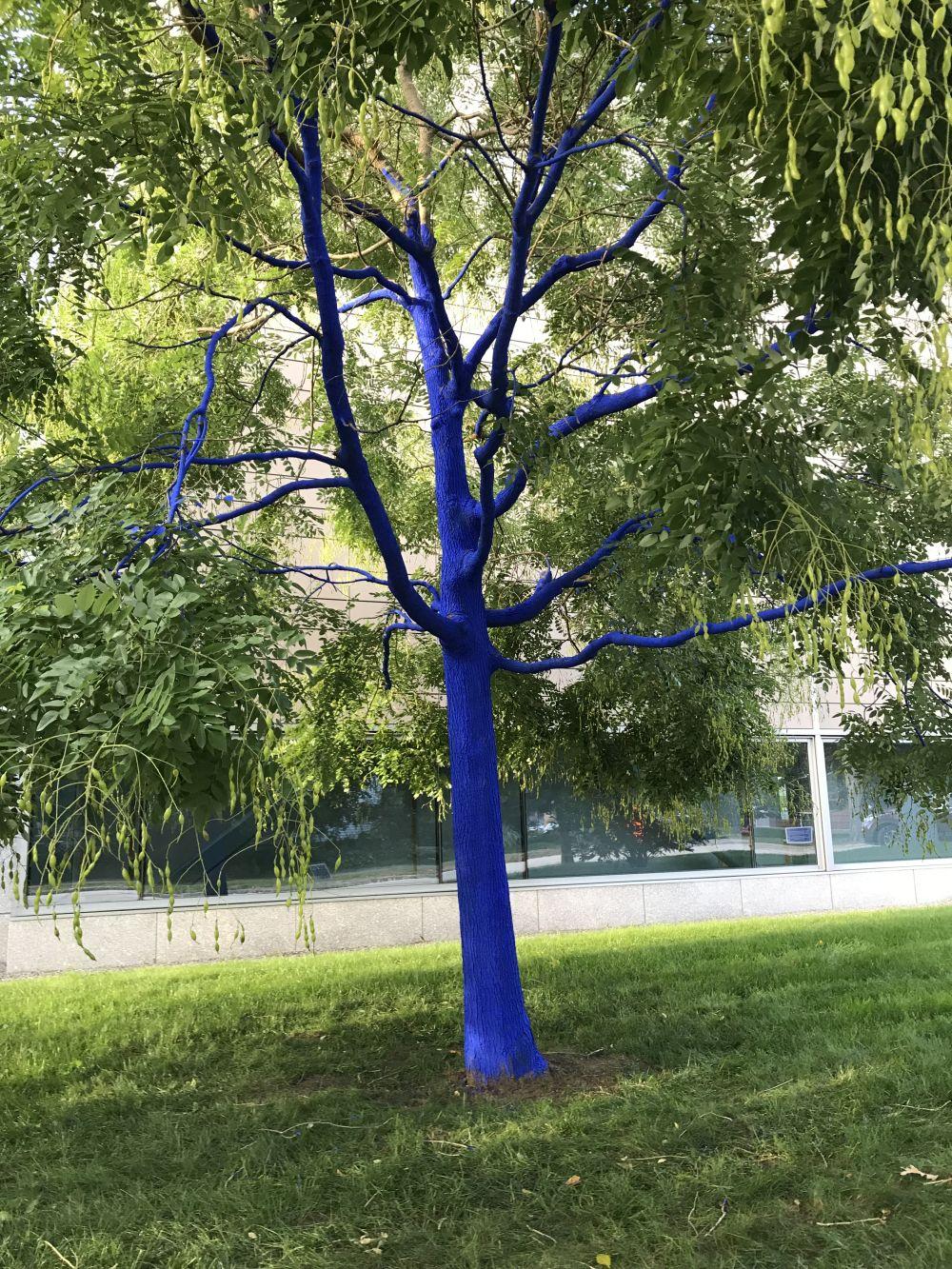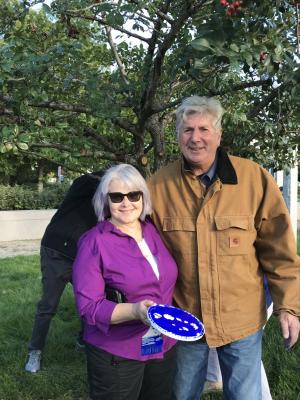Celebrate the role of forests and community trees in NH
- Tags:
- Education

The exhibition of "The Blue Trees" at the Currier Museum of Art opens in Manchester this September
Make plans to visit the Currier Museum this autumn or winter to view The Blue Trees exhibit.
"The Blue Trees" exhibit will run outside the Currier Museum in Manchester from Fall 2018 to Spring 2019
The Currier Museum of Art has commissioned artist Konstantin Dimopoulos to create an environmental community art installation, The Blue Trees. With the help of community volunteers, artist Konstantin Dimopoulos will temporarily transform nearly 100 trees at the Currier and in nearby Manchester parks by coloring them with an environmentally safe pigment in a beautiful shade of blue. The Blue Trees installation helps to promote awareness of global deforestation, while enlivening the city with this dynamic community-wide art work. The Blue Trees will slowly return to their natural color over several months.

An ad-hoc group of NH partners with interests in forests and urban and community trees actively collaborated with Currier Museum staff as the exhibit was in its planning stages. For the museum and its community partners, The Blue Trees provides an excellent opportunity to celebrate trees and forests and to open an important conversation about the critical role of NH forests and street trees providing ecosystem services and enhancing our quality of life. In a state that remains 84% forest by land area, we all fortunately inhabit a forested landscape with vibrant communities caring for community shade trees in parks and more urban landscape settings.
From the Currier Musuem website, here are some of the frequently asked questions regarding The Blue Trees:
The Blue Trees: Frequently Asked Questions
What is The Blue Trees?
The Blue Trees is an environmental community art installation by Konstantin Dimopoulos in which trees have been temporarily transformed with environmentally safe blue pigment to stimulate awareness and discussion of global deforestation, while engaging the community in art activity and dialogue.
Is the color safe?
The artist uses a biologically-safe watercolor specifically developed for this art installation. It is harmless to all flora, fauna, insects, waterways, and humans. The Blue Trees uses the powerful concept of transformation to raise awareness about the importance of trees to people and their environment. As a transitory artwork, the trees will gradually revert to their natural state.
Why blue?
The artist created a unique shade of blue because “there are no naturally blue trees.” The artist believes that the color will draw people’s attention to the trees and create dialogue about why they are blue, why trees are important, and why art is important.
How long will the trees be blue?
Based on the bark of the trees being colored and the weather in New Hampshire, the trees will be blue for several months.
Why were these trees chosen?
Trees around the Currier Museum, Victory Park, and Pulaski Park were chosen based on their proximity to the museum, the health and bark of the trees, and the artist’s vision for which groups of trees would create a visual impact once colored blue.
Why is the Currier exhibiting The Blue Trees?
The Currier Museum is committed to connecting people with art, expanding our gallery spaces into the broader community. In this sense, an installation as visibly powerful as The Blue Trees will:
- Generate an understanding of the power of art and how it can address social issues
- Increase awareness of the need for neighborhood enhancement
- Foster cultural and community connectedness
- Create a stronger connection between the city’s cultural institutions and downtown
Does New Hampshire worry about deforestation?
While the type of global deforestation that inspired the artist’s original vision for The Blue Trees is not a major concern in New Hampshire today, it has been a part of the state’s history. Currently, the biggest issue facing New Hampshire forests is fragmentation, the subdivision of larger contiguous forests into smaller, disconnected lands, normally done so by roadways or other human intervention. This creates several issues affecting the health of these lands and the creatures who inhabit them. For more information on New Hampshire’s forests: https://forestsociety.org/new-hampshire-everlasting
Where can I learn more?
http://kondimopoulos.com/the-blue-trees/
